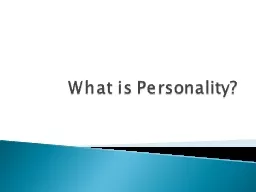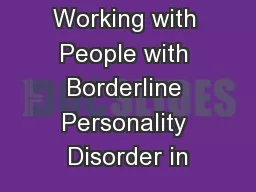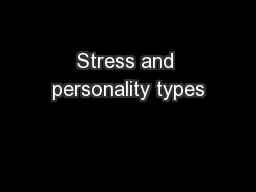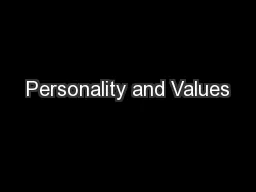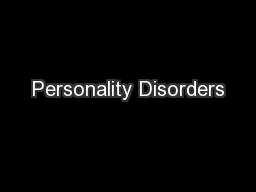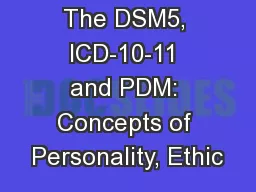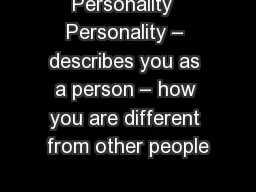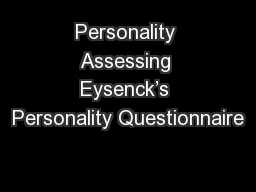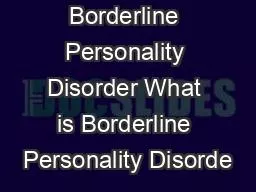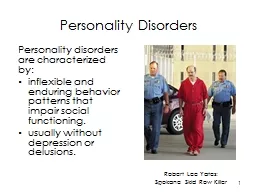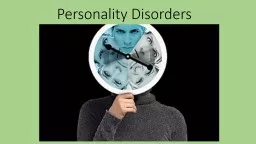PPT-What is Personality?
Author : mitsue-stanley | Published Date : 2016-04-09
The set of psychological traits and mechanisms within the individual that are organized and relatively enduring and that influence his or her interactions with and
Presentation Embed Code
Download Presentation
Download Presentation The PPT/PDF document "What is Personality?" is the property of its rightful owner. Permission is granted to download and print the materials on this website for personal, non-commercial use only, and to display it on your personal computer provided you do not modify the materials and that you retain all copyright notices contained in the materials. By downloading content from our website, you accept the terms of this agreement.
What is Personality?: Transcript
Download Rules Of Document
"What is Personality?"The content belongs to its owner. You may download and print it for personal use, without modification, and keep all copyright notices. By downloading, you agree to these terms.
Related Documents

